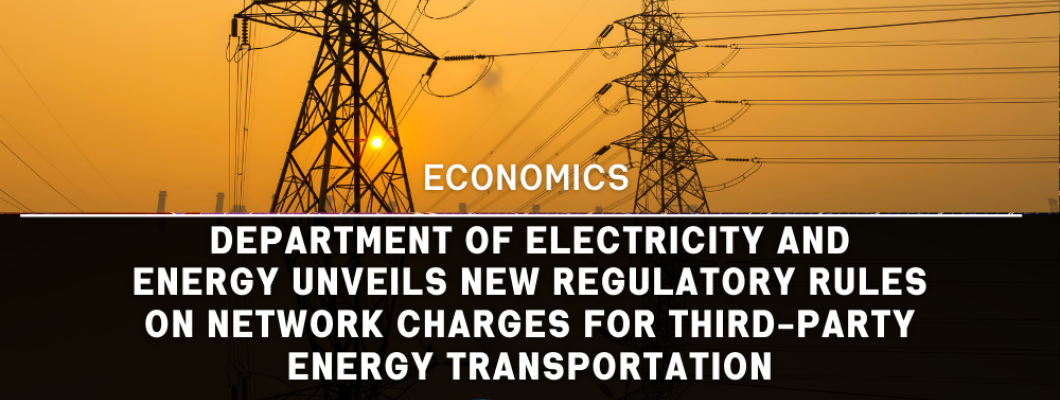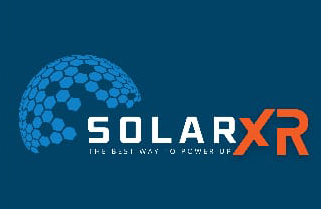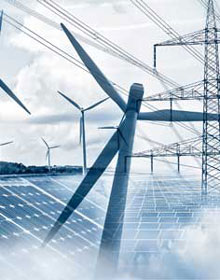
In a groundbreaking move, the Department of Electricity and Energy has announced the release of updated regulatory rules on network charges for third-party transportation of energy. These updated rules, known as the "electricity wheeling framework," were unveiled by Minister Kgosientsho Ramokgopa during a media briefing held on Tuesday.
Electricity wheeling involves the delivery of electricity by a generator to a customer in a different location using existing distribution or transmission networks. This framework is heralded as a pivotal intervention in South Africa's electricity sector, promising to reshape the energy landscape.
Minister Ramokgopa emphasized the significance of the updated framework, describing it as the "most consequential intervention" for the sector. He stated that the move aligns with the goals outlined in the Energy Action Plan enacted by President Cyril Ramaphosa in July 2022. The framework is set to enhance energy security by diversifying generation sources beyond the state utility, Eskom.
Key Conditions for Third-Party Participation
To participate in electricity wheeling, third parties must adhere to specific conditions:
- Licensing and Registration: Participants must be licensed and registered with the National Energy Regulator of South Africa (NERSA).
- Agreements: Power purchase agreements, as well as connection and use-of-system agreements, must be properly concluded.
- Compliance: Participants are required to comply with grid codes and maintain auditable metering systems.
The updated wheeling framework aims to support open access to the electricity network, allowing consumers the freedom to choose their power sources. This initiative is expected to foster competition, ultimately leading to reduced electricity prices.
The framework also targets several key areas:
- Non-Discriminatory Access: Ensuring equal access to the grid for all users.
- Cost Reflective Tariffs: Implementing charges that mirror the actual cost of network use.
- Fairness and Equity: Striving for a balance of interests between customers and licensees with unbiased tariffs.
- Transparency: Promoting unbundled tariffs to reveal true costs, subsidies, and levies.
- Network Reliability: Maintaining grid security during wheeling activities.
- Standardisation: Creating consistent processes across all network service providers.
- Regulatory Certainty: Reinforcing NERSA's role in governing fair and transparent access.
- Just Energy Transition: Facilitating access to renewable energy through wheeling.

Minister Ramokgopa highlighted the broader implications of the framework, stating, "We are democratizing this space. By not relying solely on Eskom, multiple generators of electricity can emerge. With competition comes efficiency, innovation, research, and investment, potentially driving prices down."
Ramokgopa also noted that affordable electricity is crucial for all, including those in rural and peri-urban areas. The framework is poised to support this goal by encouraging diverse energy generation and reducing costs.
The Energy Action Plan (EAP), announced by President Ramaphosa in July 2022, is coordinated by the National Energy Crisis Committee (NECOM) under Minister Ramokgopa's leadership. The plan features five key interventions aimed at reducing load shedding and achieving long-term energy security:
- Fix Eskom: Improve the availability of existing supply.
- Private Investment: Enable and accelerate private investment in generation capacity.
- Procurement: Fast-track the procurement of new generation capacity from renewables, gas, and battery storage.
- Rooftop Solar: Encourage businesses and households to invest in rooftop solar.
- Sector Transformation: Fundamentally transform the electricity sector to ensure long-term energy security.
The unveiling of these updated regulatory rules marks a significant step in South Africa's journey towards a more secure, diverse, and affordable energy future.


137 Comment(s)
What's The Current Job Market For Car Keyless Entry System Repair Professionals? Car Keyless Entry System Repair
What's The Current Job Market For Smart Key Repair Professionals Like? Smart Key Repair
Five Killer Quora Answers To Car Mechanical Key Repair Car Mechanical Key Repair
Key Stuck In Ignition Repair Tools To Improve Your Daily Lifethe One Key Stuck In Ignition Repair Trick That Every Person Should Be Able To Key Stuck In Ignition Repair
What The Heck Is Mobile Car Key Repair? Car Key Repair Service
See What Emergency Key Repair Tricks The Celebs Are Making Use Of Emergency Key Repair
How Licensed Car Key Repair Changed My Life For The Better Car Key Repair Service
See What Ignition Key Repair Tricks The Celebs Are Using ignition key repair (Https://hedge.fachschaft.informatik.uni-kl.de/)
9 Things Your Parents Teach You About Car Flip Key Repair Flip Key Repair
15 Current Trends To Watch For Keyless Fob Repair Vehicle Keyless Start Repair
Licensed Car Key Repair Tips From The Most Successful In The Industry Smart Key Repair
Guide To Car Keyless Entry Fob Repair: The Intermediate Guide For Car Keyless Entry Fob Repair car keyless entry fob repair; social.muztunes.co,
Nine Things That Your Parent Taught You About Car Key Remote Repair Car Key Remote Repair (algowiki.win)
See What Car Keyless Start System Repair Tricks The Celebs Are Utilizing Car Keyless Start System Repair
Car Remote Key Repair Tips To Relax Your Everyday Lifethe Only Car Remote Key Repair Trick That Every Person Must Know Car Remote Key Repair
Guide To Car Keyless Entry Fob Repair: The Intermediate Guide The Steps To Car Keyless Entry Fob Repair car keyless entry fob repair (https://graph.org/10-pinterest-accounts-You-should-follow-about-car-remote-start-repair-08-30)
What Is Licensed Car Key Repair? To Make Use Of It smart key repair - hedgedoc.digillab.uni-augsburg.de -
5 Killer Quora Answers To Keyless Ignition Repair keyless ignition repair - https://hyde-cormier.technetbloggers.de/who-is-car-key-switch-repair-and-why-you-should-consider-car-key-switch-repair -
Five Killer Quora Answers On Car Key Lock Repair Car Key Lock Repair
10 Smart Key Repair Projects Related To Smart Key Repair To Extend Your Creativity Car Smart Key Repair
Key Stuck In Ignition Repair Tools To Improve Your Daily Lifethe One Key Stuck In Ignition Repair Trick Every Individual Should Learn key stuck in ignition repair
Five Killer Quora Answers On Keyless Ignition Repair Keyless Ignition Repair
What's The Job Market For Car Keyless Entry System Repair Professionals? Car Keyless Entry System Repair
Five Killer Quora Answers On Keyless Ignition Repair Keyless Ignition Repair
See What Car Key Blade Repair Tricks The Celebs Are Utilizing Car Key Blade Repair
See What Car Key Blade Repair Tricks The Celebs Are Making Use Of Car Key Blade Repair
Guide To Car Door Lock Repair: The Intermediate Guide In Car Door Lock Repair car door Lock repair
14 Smart Ways To Spend Your Leftover Push To Start Key Repair Budget key fob Repair
This Week's Most Popular Stories Concerning Transponder Key Repair Remote Key Repair
What's The Current Job Market For Vehicle Keyless Start Repair Professionals? Vehicle keyless start repair
Fast Car Key Repair Tips To Relax Your Everyday Lifethe Only Fast Car Key Repair Trick That Everyone Should Be Able To Car Key Repair
Proximity Key Repair Tools To Streamline Your Everyday Lifethe Only Proximity Key Repair Trick That Every Person Should Learn Proximity Key Repair
Guide To Push To Start Key Repair: The Intermediate Guide Towards Push To Start Key Repair Push To Start Key Repair
Guide To Car Door Lock Repair: The Intermediate Guide On Car Door Lock Repair Car Door Lock Repair
Car Remote Key Repair Tools To Make Your Daily Life Car Remote Key Repair Trick That Should Be Used By Everyone Know car remote Key repair
The 9 Things Your Parents Teach You About Car Flip Key Repair Flip Key Repair (Https://Md.Chaosdorf.De/)
Guide To Car Key Sensor Repair: The Intermediate Guide In Car Key Sensor Repair Car Key Sensor Repair
The 10 Most Scariest Things About Best Robotic Vacuum Cleaners Best Robotic Vacuum Cleaners
Robot Cleaner Uk Tools To Help You Manage Your Daily Lifethe One Robot Cleaner Uk Trick Every Individual Should Learn Robot Cleaner
See What Best Robotic Hoover Tricks The Celebs Are Using Best Robotic Hoover
The 10 Most Scariest Things About Best Robotic Vacuum Cleaners Best Robotic vacuum cleaners
5 Must-Know Practices For Robot Cleaners Uk In 2024 Buy robot cleaner (morphomics.Science)
The Best Automatic Vacuum Cleaner And Mop Tricks For Changing Your Life best automatic vacuum cleaner
15 Unquestionably Reasons To Love Automatic Hoovers AI vacuum Cleaner
15 Of The Best Twitter Accounts To Discover More About Best Robot Vacuum And Mop Best robot vacuum and mop UK
It Is A Fact That Robot Vacuum Cleaner Is The Best Thing You Can Get. Robot Vacuum Cleaner best robot vacuum Cleaners (Skitterphoto.com)
What's The Job Market For Robot Vacuum Cleaner Professionals? robot vacuum Cleaner
What's The Job Market For Which Robot Vacuum Cleaner Professionals? which robot vacuum cleaner
Five Killer Quora Answers On Robot Vacuum Uk Robot Vacuum Uk
The No. Question Everybody Working In Robot Vacuum Cleaner Should Be Able To Answer Robot Vacuum Cleaners; Sparktv.Net,
What's The Current Job Market For Vehicle Keyless Start Repair Professionals Like? Keyless Start Repair (https://pad.karuka.tech/Mk_0CmD8Q_SaXY-m0gOjeQ)
10 Myths Your Boss Has About Robotic Hoover robotic Hoover and mop
See What Best Robotic Hoover Tricks The Celebs Are Using best robotic hoover
The Top Reasons Why People Succeed With The Robotic Hoover Industry robotic hoover and mop
Robot Vacuum Cleaners Tools To Ease Your Daily Lifethe One Robot Vacuum Cleaners Trick That Should Be Used By Everyone Learn Robot Vacuum Cleaner
See What Automatic Vacuum Cleaner Uk Tricks The Celebs Are Utilizing Automatic Vacuum Cleaner Uk
Robot Robotic Vacuum Cleaners Tips To Relax Your Everyday Lifethe Only Robot Robotic Vacuum Cleaners Trick Every Person Should Know robot robotic vacuum cleaners
See What Automatic Vacuum Cleaner Uk Tricks The Celebs Are Using Automatic Vacuum Cleaner Uk
The Best Automatic Vacuum Cleaner And Mop Tricks For Changing Your Life best Automatic vacuum cleaner - https://hyllested-lara-2.thoughtlanes.net/check-out-how-Which-robot-vacuum-cleaner-is-taking-over-And-how-to-stop-it -
Robot Vacuum And Cleaner Tools To Ease Your Everyday Lifethe Only Robot Vacuum And Cleaner Trick Every Individual Should Be Able To robot Vacuum and cleaner
Why You'll Definitely Want To Read More About Buy Cleaning Robot Vacuum Robot
14 Common Misconceptions Concerning Roomba Hoover Uk Best robot vacuum cleaner uk
Guide To Auto Vacuum Cleaner: The Intermediate Guide On Auto Vacuum Cleaner auto Vacuum cleaner
15 Gifts For The Buy Robot Vacuum Cleaner Lover In Your Life robot vacuum cleaners
What's The Current Job Market For Good Robot Vacuum Cleaner Professionals Like? Good Robot vacuum cleaner
Guide To Auto Vacuum Cleaner: The Intermediate Guide For Auto Vacuum Cleaner auto vacuum cleaner
Guide To Best Robot Vacuum Uk: The Intermediate Guide For Best Robot Vacuum Uk Best Robot vacuum uk
Guide To Best Robot Vacuum Uk: The Intermediate Guide In Best Robot Vacuum Uk Best Robot vacuum Uk
The 10 Most Terrifying Things About Robot Vacuum Cleaner Dog Hair robot vacuum cleaners
The 10 Most Terrifying Things About Automatic Vacuum robot Vacuum
How Do I Explain Robot Vacuum To A 5-Year-Old self-cleaning robot vacuum
The Best Automatic Hoover Tricks To Transform Your Life best Automatic hoover
The 10 Most Scariest Things About Best Robot Vacuum And Mop Best Robot Vacuum And Mop
20 Quotes Of Wisdom About Robotic Vacuum Robotic Sweeper
The 10 Most Scariest Things About Floor Robot Floor Robot
5 Killer Quora Answers On Robotic Hoover Robotic Hoover (Algowiki.Win)
What's The Current Job Market For Which Robot Vacuum Cleaner Professionals? Which robot vacuum Cleaner, Morphomics.science,
A Step-By Step Guide For Choosing Your Robot Vac And Mop Best robot vacuum cleaner UK
The 10 Most Scariest Things About Floor Robot Floor robot
The Ultimate Glossary For Terms Related To Vacuum Cleaners Robot home cleaning robot
Five Killer Quora Answers To Robot Vacuum Uk robot Vacuum Uk
What's The Current Job Market For Robot Vacuum Cleaners Professionals Like? robot Vacuum Cleaners
5 Killer Quora Answers On Robot Vacuum Cleaner Uk robot Vacuum Cleaner uk
15 Best Robot Vacuum And Mop Bloggers You Should Follow best robot Vacuum and mop
Robot Cleaner Vacuum And Mop Tools To Ease Your Everyday Lifethe Only Robot Cleaner Vacuum And Mop Trick That Every Person Must Be Able To Robot Cleaner Vacuum And Mop
The 10 Most Scariest Things About Robot Vacuums & Mops Robot Vacuums & Mops
5 Killer Quora Answers On Robot Vacuum Uk robot vacuum Uk
15 Presents For Those Who Are The Robot Vacuum Lover In Your Life smart carpet Cleaner
20 Myths About Robot Vacuum Cleaner: Dispelled Best Robot Vacuum Cleaners Uk
Ten Things You've Learned In Kindergarden That Will Aid You In Obtaining Auto Vacuum auto vacuum cleaner (gm6699.com)
The 10 Most Terrifying Things About Best Robot Vacuums Uk best robot vacuums uk
Guide To Push To Start Key Repair: The Intermediate Guide To Push To Start Key Repair push To start key repair
9 Lessons Your Parents Taught You About Robot Vacuum self-cleaning Robot
What Is Robot Cleaners Uk? How To Use It buy robot cleaner
Robot Cleaner Vacuum And Mop Tools To Help You Manage Your Everyday Lifethe Only Robot Cleaner Vacuum And Mop Trick That Should Be Used By Everyone Learn Robot Cleaner Vacuum And Mop
You'll Never Guess This Autonomous Vacuum's Tricks autonomous vacuum
The 10 Scariest Things About Robot Vacuums & Mops Robot Vacuums & mops
What's The Job Market For Which Robot Vacuum Cleaner Professionals? Which robot vacuum cleaner
Guide To Best Robot Vacuum Uk: The Intermediate Guide Towards Best Robot Vacuum Uk Best Robot Vacuum Uk
Guide To Robot Vacuum Cleaner With Mop: The Intermediate Guide In Robot Vacuum Cleaner With Mop robot vacuum Cleaner with mop
Automatic Vacuum Cleaner And Mop Tools To Ease Your Everyday Lifethe Only Automatic Vacuum Cleaner And Mop Trick That Everyone Should Know Automatic vacuum cleaner
9 Lessons Your Parents Taught You About Robot Hoover Uk robot hoover uk
The 10 Most Scariest Things About Floor Robot Floor robot
The 10 Most Scariest Things About Best Robot Vacuums Uk best robot vacuums uk
14 Smart Ways To Spend On Leftover Best Automatic Vacuum Cleaner Budget best robotic vacuum cleaner uk
You'll Never Be Able To Figure Out This Autonomous Vacuum's Benefits Autonomous vacuum
How To Explain Automatic Vacuum To Your Grandparents Best Robot vacuum cleaner UK
All The Details Of Robot Cleaners Uk Dos And Don'ts buy robot Cleaner
Ten Robotic Hoovers That Really Help You Live Better robotic hoovers
Guide To Best Robot Vacuum Uk: The Intermediate Guide On Best Robot Vacuum Uk Best Robot Vacuum uk
Your Worst Nightmare Concerning Good Robot Vacuum Cleaner It's Coming To Life best robotic vacuum cleaner uk
5 Best Robotic Hoover Projects For Any Budget Robotic Hoovers
Robot Vacuum And Cleaner Tools To Help You Manage Your Everyday Lifethe Only Robot Vacuum And Cleaner Technique Every Person Needs To Know Robot Vacuum And Cleaner
What's The Current Job Market For Robot Vacuum Cleaners Professionals Like? Robot Cleaner
See What Best Robotic Hoover Tricks The Celebs Are Using robotic hoover (md.entropia.de)
Robot Cleaners Uk Tools To Improve Your Everyday Lifethe Only Robot Cleaners Uk Technique Every Person Needs To Learn robot Cleaner
Guide To Best Robot Vacuum Uk: The Intermediate Guide Towards Best Robot Vacuum Uk robot vacuum
Guide To Robot Vacuum Cleaner With Mop: The Intermediate Guide The Steps To Robot Vacuum Cleaner With Mop Robot vacuum Cleaner with Mop
Five Killer Quora Answers On Robot Vacuum Uk robot vacuum uk
See What Best Robotic Hoover Tricks The Celebs Are Utilizing robotic Hoover
What's The Current Job Market For Robot Vacuum Cleaners Professionals Like? robot vacuum - https://500Px.com,
You'll Never Be Able To Figure Out This Robot Mop Uk's Secrets Robot Mop UK
Guide To Robot Vacuum Cleaner With Mop: The Intermediate Guide In Robot Vacuum Cleaner With Mop robot vacuum cleaner With mop
Will Robotic Hoover One Day Rule The World? Robotic Hoovers (Hedgedoc.K8S.Eonerc.Rwth-Aachen.De)
9 . What Your Parents Teach You About Robotic Hoover robotic hoover
5 Killer Quora Answers To Robot Vacuum Cleaner Uk robot Vacuum Cleaner Uk
What's The Current Job Market For Autonomous Vacuum Professionals? Autonomous Vacuum - https://posteezy.com -
The 10 Most Scariest Things About Floor Robot floor robot (webwiki.de)
Guide To Keyless Push Button Start Repair: The Intermediate Guide For Keyless Push Button Start Repair keyless push button start repair; articlescad.com,
Take A Look At You The Steve Jobs Of The Good Robot Vacuum Cleaner Industry best robotic vacuum cleaner uk (https://forums.ppsspp.org)
The 10 Most Terrifying Things About Robot Vacuums & Mops Robot Vacuums & Mops
You'll Never Guess This Robot Mop Uk's Benefits robot mop Uk
You'll Never Guess This Robot Mop Uk's Tricks Robot mop UK; semdinlitesisat.eskisehirgocukduzeltme.com,
Robot Vacuum And Cleaner Tools To Ease Your Daily Lifethe One Robot Vacuum And Cleaner Technique Every Person Needs To Be Able To robot vacuum and cleaner
Ten Autonomous Vacuum Myths You Shouldn't Share On Twitter vacuum robot [pad.stuve.Uni-ulm.de]
The 10 Most Terrifying Things About Best Robotic Vacuum Cleaners Best Robotic vacuum Cleaners
What's The Current Job Market For Mobile Car Key Repair Professionals? Mobile Car Key Repair (codimd.fiksel.info)
Leave a Comment